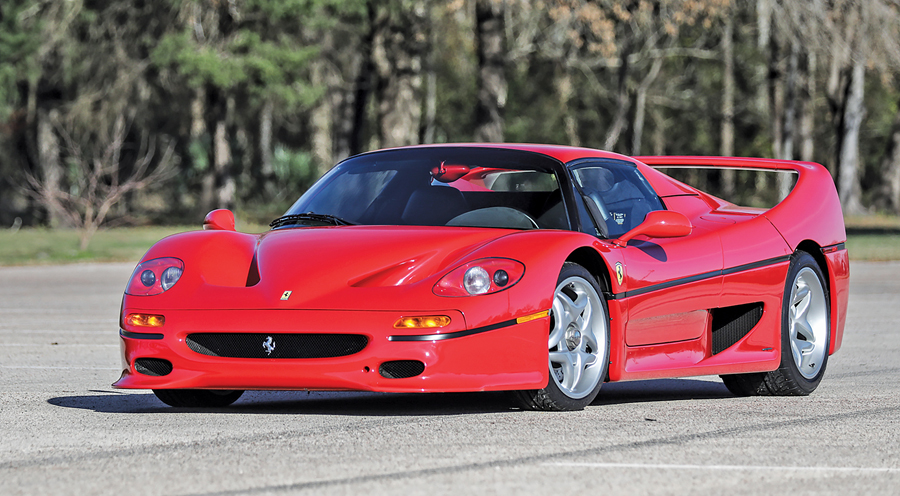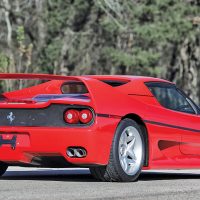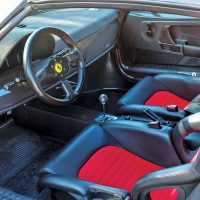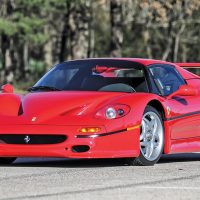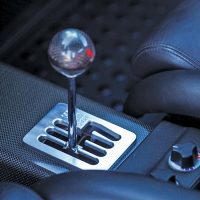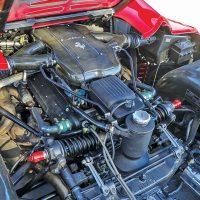SCM Analysis
Detailing
| Vehicle: | 1995 Ferrari F50 |
| Years Produced: | 1995–97 |
| Number Produced: | 349 |
| Original List Price: | $475,000 |
| SCM Valuation: | $1,937,000 |
| Chassis Number Location: | On bulkhead in front compartment |
| Engine Number Location: | Front left side of the block |
| Club Info: | Ferrari Club of America |
| Website: | http://www.FerrariClubofAmerica.org |
| Alternatives: | 1984–85 Ferrari 288 GTO, 1988–91 Ferrari F40, 2002–03 Ferrari Enzo |
| Investment Grade: | A |
This car, Lot 44, sold for $3,222,500, including buyer’s premium, at Gooding & Company’s Scottsdale, AZ, auction on January 17, 2020.
The top sale at the 2020 Scottsdale auction week was not a rare early Ferrari — or any of the other multimillion-dollar vintage exotics that normally top the charts. It was a 25-year-old 1995 Ferrari F50, a relative newcomer in the collector-car world.
Times are changing, and the hobby is changing with it.
Ferrari lore says Piero Ferrari was driving his F40 to work when he hatched an idea that supercars were about as fast as they needed to be. He thought the next Ferrari supercar should be focused on the driving experience as much as the performance.
The driving experience, he felt, should be that of a Ferrari Formula One car.
How do you build a Formula One car for the street? Mimic the design and construction of a Formula One car.
The genesis of the F50 is a serious carbon-fiber tub. Attached to the tub as a stressed member is a 4.7-liter, 513-horsepower, normally aspirated V12 engine evolved from a Ferrari 641 Formula One car. A 6-speed transaxle is attached to the engine, and the rear suspension is mounted to the engine/transaxle structure. A sophisticated pushrod front suspension and massive Brembo brakes finish the concept.
The Pininfarina-designed composite body is the product of extensive wind-tunnel development. A detachable hard top allows the driver to choose open air or berlinetta touring. A sparse interior with racing seats continues the Formula car theme.
Hello again…
This isn’t the first time we’ve seen our subject Ferrari F50. After the passing of the original owner, Gooding & Company was charged with liquidating most of his collection.
This F50 was sold at Gooding & Company’s 2011 Scottsdale sale. It had just over 5,000 miles at the time. It was described as complete with all of its original factory accessories — and in excellent condition. The estimate was $750,000 to $850,000. The car sold for $814,000, right in the middle of the estimate. That was a bit over its original price and totally appropriate for the time.
The car ended up going to a collector who drove it less than 200 miles during his nine years of ownership. Gooding & Company’s 2020 Scottsdale catalog description credits the mileage as less than 5,200 miles. The Ferrari still has its factory accessories and recently underwent a comprehensive service.
The spending never stops
Building a car that performs at the pinnacle of the automotive universe is complicated and expensive. Rumors of $40,000 tire changes and $20,000 oil changes are real in the supercar world. Servicing an F50 is not as expensive as a Bugatti Veyron or a McLaren F1, but the bill can still get the attention of a millionaire.
F50s have a fuel cell filled with a foam material. The foam core, often incorrectly called a bladder, should be replaced every 10 years. If not replaced, it will disintegrate and clog the fuel system. There are a couple ways to address the issue, but a $10,000 to $20,000 bill is the norm. Our subject car was treated to an engine-out major service in 2018. The bill exceeded $85,000.
The value kept building
Gooding & Company’s estimate for this sale was $3,200,000 to $3,600,000. The hammer fell at a healthy $3,222,500, an astonishing $2,400,000 gain over nine years.
The change in value can be attributed in part to changes in automobile collecting. As younger collectors enter the market, they are mostly interested in cars they remember from their youth. So 25 years ago, a 25-year-old enthusiast would have lusted after an F50. Those collectors would now be 50 years old. If they have been very financially successful, buying an F50 would make their shortlist.
It’s also important to recognize just how rare this car is. Officially, only 349 F50s were built. Only 55 U.S.-market models were produced. Put in perspective, that’s barely one per dealer. This one is a well-documented, low-mileage, two-owner, fully serviced, U.S. example.
It may be years before a better F50 comes on the market.
The right car for the place and time
Across town at Worldwide Auctioneers’ Scottsdale sale, a prototype F50 also went across the block. Prior to the auction, the seller had been asking $5,000,000 for the car, hoping the uniqueness would attract a starry-eyed mark — er, prospect. Worldwide dialed back the seller’s expectations with a hint the car should go in the $3,000,000 range. The car missed its reserve, did not sell and is now back on the market at $3,300,000.
A study of F50 auction sales shows prices varying greatly. As with all auctions, there have to be two people to fight over the car to get a good number.
There isn’t always a top-of-the-market buyer. Often the car doesn’t meet a buyer’s expectation. On January 17, Gooding & Company had the right buyer and the right car. They got the right bid and everybody should be happy. ♦
(Introductory description courtesy of Gooding & Company.)
